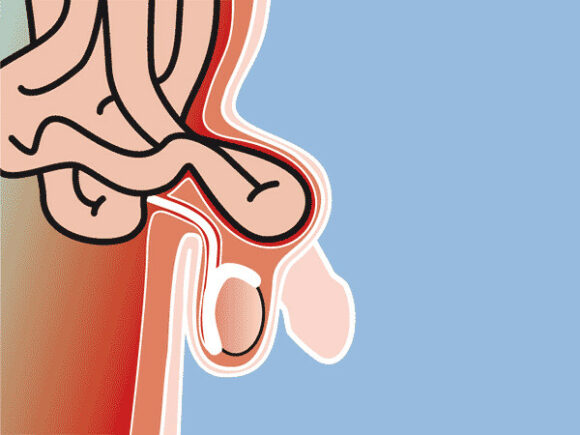Inguinal Hernias / Groin Hernias
Inguinal hernias / groin hernias are the most frequent surgical disease worldwide. They are diagnosed and treated by ZweiChirurgen at our “Competence centre for hernia surgery” in Switzerland (Basel, Zurich, Liestal).
More than 20 Mio groin hernias are operated every year globally, in Switzerland more than 18’000 patients must undergo a groin hernia repair every year. The risk for developing an inguinal hernia is almost 30% in male patients. For women the lifetime risk is about 6-8 %. An inguinal hernia is characterized by a clearly visible and palpable swelling in the groin.
Most inguinal hernias only cause mild symptoms (dull pressure, swelling), an operation is rarely immediately necessary. However, over time the hernia will increase in size and the annual risk for incarceration is around 0.5-1%. Therewith, only an operation can cure the hernia. The operation of the inguinal hernia can be executed with an open incision in the groin (Lichtenstein repair) or laparoscopically with a camera (TAPP or TEP repair). In our center we predominantly perform the laparoscopic TAPP technique. Here, the mesh is inserted between the peritoneum and the inguinal wall covering the hernia orifice and reinforcing the backwall of the groin. The advantages of this technique in comparison to open techniques are less pain, fewer complications, and faster recovery to work and social life after surgery. In many cases we use a surgical robot (DaVinci system, Intuitive) which gives a better 3D image of the camera and is much more ergonomic for the surgeon. In well selected patients with small hernias, we can also offer a mesh free suture repair of the inguinal hernia (Shouldice operation).
The most frequent complication after inguinal hernia repair is chronic postoperative inguinal pain (CPIP). In general, around 6-8 % of patients suffer from CPIP one year after surgery, especially during exercising and work after inguinal hernia repair. The risk for CPIP can depends on certain risk factors, but also from the surgical expertise. This explains the fewer rates CPIP in specialized hernia centers such as ZweiChirurgen. We operate 500-600 hernias per year and have CPIP rates around 1%.
ZweiChirurgen on SRF’s «Gesundheit Heute» programme
PD Dr. Hoffmann and a patient were guests of Dr Jeanne Fürst on the topic of inguinal hernias. How should they be treated and how often does chronic groin pain occur after an operation? The programme with additional interview can be viewed online.

Open approaches
- Operation without mesh (Shouldice)
- Operation with mesh (Lichtenstein)
Minimally-invasive approaches
- Operation in the preperitoneal space (TEP)
- Operation with laparoscopy (TAPP)
Hospital stay: 2 days
Outpatient treatment in unilateral hernias if applicable
